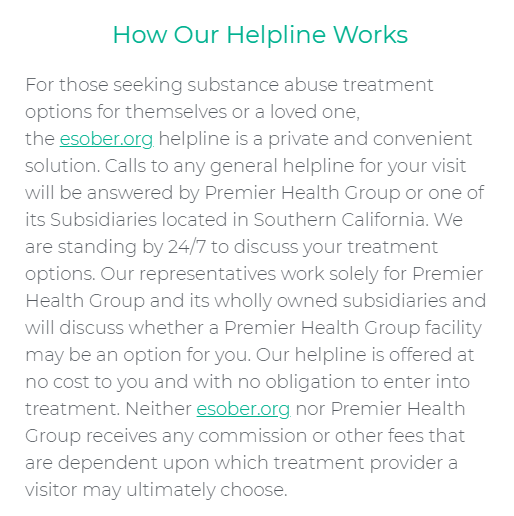Allergies develop when the immune system overreacts to substances like food, medication, dust, and pollen. Allergic reactions can cause a runny nose, watery eyes, vomiting, or shortness of breath, depending on the allergen that triggers allergy symptoms. Thankfully, these can be managed with various medications, and the most commonly used is antihistamines.
Millions of people use these drugs to relieve their symptoms when suffering from a sudden allergic reaction or chronic allergies. These medications are affordable and easily accessible as they are sold over the counter. Unfortunately, not everyone who takes them fully understands what they are and the risks of using them.
Can Antihistamines Be Abused?
Antihistamines can produce sedative effects which can tempt people to abuse them. They do this by taking more than the suggested dosage, and even combine them with other substances or medicines like alcohol, opiates, tranquilizers, or dextromethorphan (DMX) in cough syrups to intensify and prolong these sedative effects.
In particular, diphenhydramine boosts the sedating effects of several prescription drugs. Besides sedation and sleepiness, this medication can cause tiredness, dizziness, disturbed coordination, stomach distress, and thickening of oral and other respiratory secretions.
Many users assume that antihistamines are safe for getting high because they are available over the counter. However, they can cause overdose symptoms, adverse health effects, and even death. Additionally, high doses of this medication combined with alcohol can cause liver dysfunction.
What Are the Signs of Antihistamine Abuse?
Antihistamine overuse can develop signs of drug abuse or addiction. If you or your loved one regularly take this medication, here are some signs to watch out for:
- Addiction behaviors, such as compulsive drug-seeking
- Drug tolerance
- Physical, chemical, and psychological dependence
- The need to take increasing doses every few days
Suddenly stopping taking antihistamines or reducing the dosage after chronic use can cause drug withdrawal. Depending on the severity level and the lifespan of drug use, it can lead to these withdrawal symptoms:
- Abdominal cramps
- Diarrhea
- Insomnia
- Irritability
- Restlessness
- Runny nose
- Sweating
What Are the Effects of Antihistamine Abuse?
Taking antihistamines at prescribed doses is generally safe, but abusing them can be dangerous. They cause long-term negative effects on the brain and body, including:
- An inability to function normally without antihistamine
- Anxiety
- Chronic low blood pressure
- Complications for the unborn child (For pregnant or breastfeeding mothers)
- Coordination problems
- Depression
- Dizziness
- Gastrointestinal complications
- General confusion
- Heart palpitations due to blood pressure fluctuations
- Impatience
- Liver dysfunction
- Long-term or permanent changes in vision
- Moodiness
- Restlessness
- Skin rashes
- Tightness in the chest
- Tremors
- Trouble with thinking clearly
Who Are at Risk of Abusing Antihistamine?
Generally, people most at risk of abusing antihistamines are those who are also at risk of abusing any substance. These risk groups are:
- Children and teenagers who lack parental supervision
- People who abuse alcohol or other drugs at an early age
- Highly impulsive people
- People who display aggressive behavior
- People who have suffered physical, emotional, or sexual abuse
- People who live in poverty
- People with brain characteristics that make them vulnerable to addictive substances
- People with friends or family members suffering from drug addiction
- People with mental health disorders
What Are Antihistamines?
Antihistamines are drugs used to manage allergy symptoms. They contain one active agent or combination formulas that block the effects of excessive histamines in the body. These are chemicals released by the immune system when it encounters a threat from an allergen and overreacts. It leads to allergy symptoms once vessels swell and dilate.
How Are Antihistamines Classified?
Antihistamines come in two subtypes: H-1 receptor antagonists or H-1 blockers and H-2 receptor antagonists or H-2 blockers. The former manage allergy symptoms, while the latter treat gastrointestinal conditions, such as nausea, motion sickness, vomiting, and more.
Prescription and over-the-counter H-1 antihistamines are primarily used for allergies. Here are some of them:
- Azelastine
- Brompheniramine
- Cetirizine
- Chlorpheniramine
- Cimetidine
- Clemastine
- Cyproheptadine
- Desloratadine
- Dexchlorpheniramine Dimenhydrinate
- Diphenhydramine
- Doxylamine
- Famotidine
- Fexofenadine
- Hydroxyzine
- Loratadine
- Nizatidine
- Phenindamine
- Ranitidine
What Are the Common Uses of Antihistamines?
Antihistamines are mainly used for allergies. However, they also treat different medical conditions, such as:
- Allergic conjunctivitis
- Allergic rhinitis
- Anaphylaxis
- Anorexia
- Anxiety
- Certain types of bone pain
- Colds
- Food allergies
- Gastroesophageal reflux disease (GERD)
- Headaches
- Heartburn
- Hives and other skin rashes
- Hypersensitivity to certain drugs
- Insect bites and stings
- Insomnia
- Motion sickness
- Parkinson’s disease
- Ulcers
- Vertigo
- Zollinger-Ellison syndrome

Do Antihistamines Treat Anxiety?
Antihistamines have a calming effect on the brain, making them ideal for treating anxiety on a short-term basis. These over-the-counter drugs also have sedating effects and induce drowsiness.
- Benadryl
Benadryl, for example, contains an active ingredient called diphenhydramine. While it primarily manages allergic reactions, it has a side effect that causes sedation. For this reason, some people take it for its calming and sleep-inducing effects. An adult dose between 25 and 50 milligrams produce these sedating effects 15-30 minutes after taking, with the peak effect happening after 2-4 hours.
- Hydroxyzine
Besides Benadryl, Vistaril (hydroxyzine) is sometimes prescribed for anxiety relief. It is an antihistamine used as a short-term treatment of anxiety. It is considered to be in the same class as other OTC medications like Zyrtec and Benadryl, but it affects histamine and serotonin, making it ideal for treating anxiety. As it blocks the effects of histamine in the body, it causes one to feel sleepy.
Hydroxyzine can be used to treat various types of anxiety disorders. It is also most often used for generalized anxiety disorder (GAD) associated with insomnia. While it helps relieve anxiety, it can also have unpleasant side effects, such as fatigue, severe drowsiness, and dizziness. For this reason, these medications and supplements are not advisable to be used as a long-term solution.
What Does the Antihistamine High Feel Like?
Unlike other drugs that produce a euphoric effect, antihistamine high induces sedation. People who abuse this medication can typically feel drowsy symptoms at first, but they may eventually feel relaxation in the body, brain fog, and an intense desire to sleep.
Other users of antihistamines aim to experience a more significant high that produces feelings of warmth, comfort, and an inability to concentrate on anxiety-inducing elements. This requires highly dangerous amounts of this drug, since it can lead to visual hallucinations, other distortions, and other side effects, including:
- Blurred vision
- Confusion and memory difficulties
- Dry eyes
- Dry mouth
- Fast or irregular heartbeat
- Increased drowsiness
- Increased sedation
- Increased sleepiness
- Lack of coordination
- Poor sleep quality
- Trouble urinating
Are There Alternatives to Sedating Antihistamines?
Newer antihistamines are non-sedating or minimally sedating. Since they have little or no effect on the central nervous system, they have little risk of being abused or causing addiction. Additionally, they have fewer side effects as they bind only to selected receptors. Here are some newer brands of antihistamines worth discussing with your doctor:
- Cetirizine (Zyrtec)
- Clemastine (Tavist)
- Desloratadine (Clarinex)
- Fexofenadine (Allegra)
- Loratadine (Claritin)
What Is the Best Way to Cope with Antihistamine Abuse?
As with any other drug addiction, abuse of antihistamines is substance abuse. For this reason, it must be taken seriously. Like any diagnosis of substance abuse disorder, it requires proper treatment to increase the chances of getting a positive outcome with minimal withdrawal effects.
Seeking help and overcoming addiction starts with finding the right drug rehabilitation center. They will help users detox, look for ways to cope with their urges, and become strong enough to resist temptation. This antihistamine abuse recovery program will help them move forward and live a better life.
Conclusion
Antihistamines might seem harmless for most people, but their sedative effects make it easy to abuse them. This is why all users have to be aware of this risk. If you or someone you love shows signs of addiction, get the help you or your loved one needs and reach out to an addiction treatment center.
Source: https://medlineplus.gov/ency/patientinstructions/000549.htm




